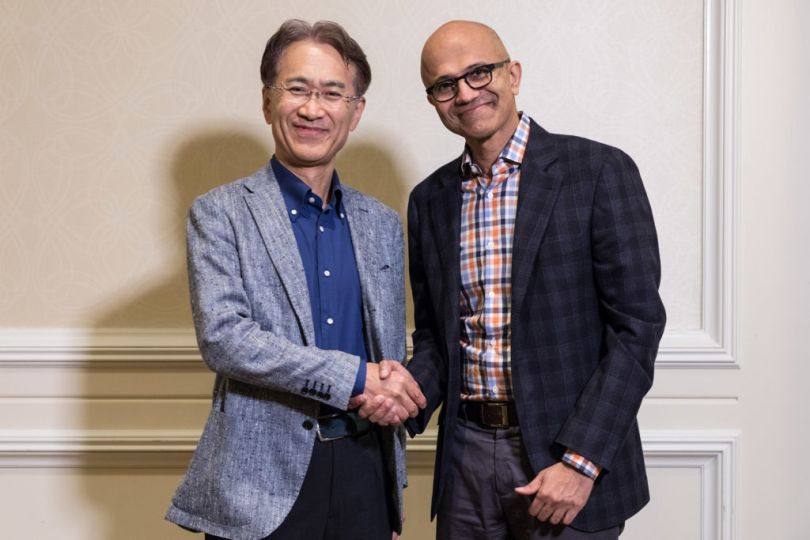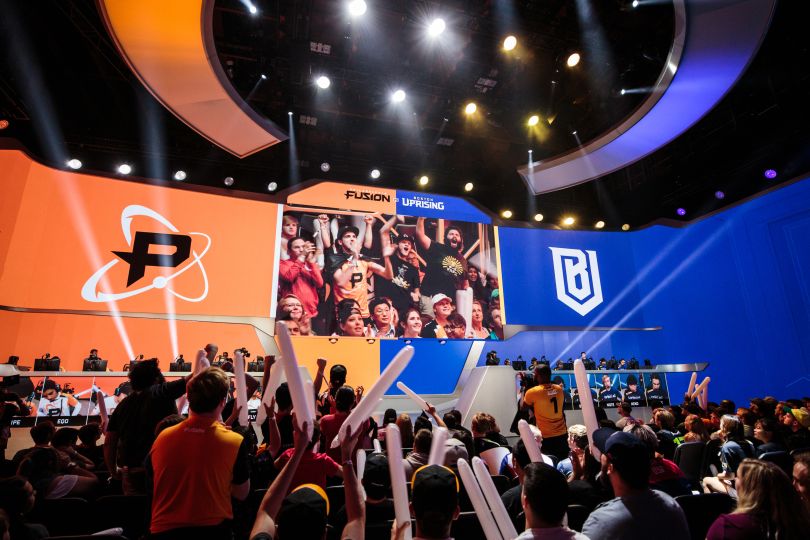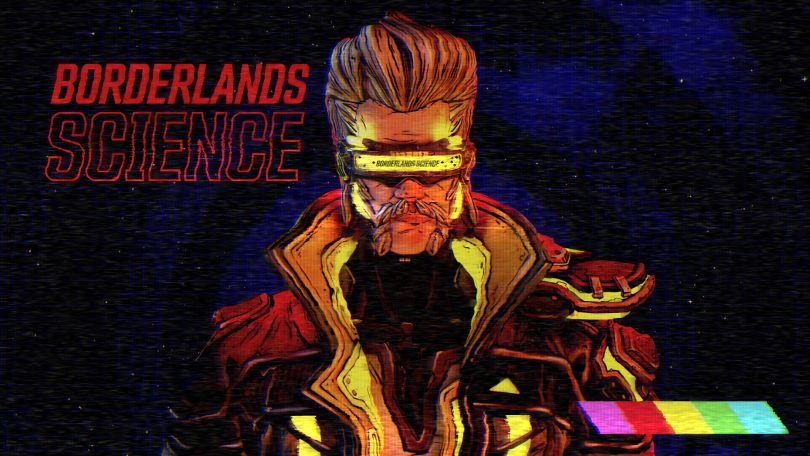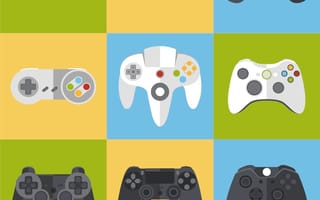Mario versus Sonic.
Sony versus Microsoft.
PC gamers versus console gamers.
The gaming industry has long been driven by rivalries — with console makers and video game publishers pushing the limits of technology and storytelling in efforts to capture sales. However, some of the biggest gaming news from the past year actually involves partnerships, which shows that collaboration can also drive innovation in gaming.
It all started in May 2019, when Sony and Microsoft announced a partnership to explore cloud gaming and streaming solutions built in the Microsoft cloud, Azure. Six months later, Activision Blizzard announced that Google Cloud would be its official online gaming infrastructure provider and YouTube would be the exclusive broadcast partner for its e-sports leagues, including the Overwatch, Call of Duty and Hearthstone franchises.
These partnerships have the potential to make a major impact on the video game industry, including cementing the future of streaming gaming, bringing e-sports into the mainstream and — in the case of publisher Take-Two Interactive’s collaboration with the scientific community — advance medical research. Here’s how.
Sony and Microsoft

The partnership in detail: Sony and Microsoft’s partnership has three key aspects. The first is a commitment to the joint development of new gaming and streaming service solutions in Azure. The second involves Sony using Microsoft’s Azure data centers as the backbone for its streaming gaming and content services.
The final aspect is a combination of Sony’s expertise in semiconductors and Microsoft’s expertise in artificial intelligence. So far, this is the only area of the partnership that has borne real fruit: the two companies announced this past May that they’re working on AI-powered Sony smart cameras.
In announcing the partnership, Sony CEO and President Kenichiro Yoshida was optimistic about what the two companies could achieve working together.
“For many years, Microsoft has been a key business partner for us, though of course the two companies have also been competing in some areas,” Yoshida said in a statement. “I believe that our joint development of future cloud solutions will contribute greatly to the advancement of interactive content.”
What it means for the gaming industry: This partnership could accelerate the rise of streaming gaming, often called “the future” of the industry. Microsoft’s streaming gaming service, Project xCloud, is currently in open beta testing. Meanwhile, Sony has confirmed that PlayStation Now, the cloud gaming service it has operated since 2015, will be available on the PS5.
Make no mistake, these two services will compete for gamers. However, both platforms will benefit from the partnership between their parent companies. Microsoft has Azure data centers around the world, enabling Sony to offer a higher-quality streaming experience to more gamers. And Sony’s experience in streaming could ensure Microsoft’s Project xCloud avoids the same speed bumps that new entrants to the streaming gaming space have faced.
Activision Blizzard and Google

The partnership in detail: This partnership is pretty straightforward: Activision Blizzard’s online games will run on Google Cloud servers and its e-sports leagues will be broadcast on YouTube, except in China. Along with the infrastructure for online games, Google Cloud also offers artificial intelligence tools that Activision Blizzard could use to create a more personalized experience for gamers. In a statement, Sunil Rayan, head of gaming at Google Cloud, touted the past work the companies have done together on the analytics front.
“We’ve worked closely with Activision Blizzard for the past few years across mobile titles to boost its analytics capabilities and overall player experience," said Rayan in a statement. “We are excited to now expand our relationship and help power one of the largest and most renowned game developers in the world.”
What it means for the gaming industry: This partnership signals that e-sports are becoming more mainstream. Previously, Activision Blizzard’s e-sports leagues were broadcast on the streaming platform Twitch. Twitch is popular with gamers, but its overall reach is limited: A recent eMarketer forecast estimated the site would surpass 40 million monthly viewers by 2021. By contrast, YouTube is one of the most popular websites in the world. According to Ryan Wyatt, the company’s head of gaming, the site’s users are already consuming tens of billions of hours of gaming content per year.
“With more than 200 million gamers a day watching more than 50 billion hours of gaming content per year, YouTube provides gamers and their passionate fans with the most popular video gaming platform in the world," Wyatt said in a statement.
Take-Two Interactive and Scientists

The partnership in detail: In April, Take-Two Interactive announced “Borderlands Science,” a minigame within the first-person shooter role-playing game Borderlands 3. Solving puzzles in Borderlands Science earns players in-game rewards and currency — and helps researchers map the human gut microbiome.
Borderlands Science challenges players to match rows of similarly colored tiles, with each tile representing a sequence of DNA from a microbe that inhabits the human gut. By matching a row of similarly colored tiles, gamers are helping scientists find similarities in the DNA of different microbes.
The minigame is the result of an unlikely collaboration between the game’s developer, Gearbox Software, and its publisher, Take-Two’s 2K Studios, and scientists and researchers at McGill University, Massively Multiplayer Online Science and The Microsetta Initiative at UC San Diego School of Medicine.
Dr. Mayim Bialik, a neuroscientist and one of the stars of CBS’ “The Big Bang Theory,” lent her voice to the instructional video that players watch the first time they start Borderlands Science.
What it means for the gaming industry: More scientists could look to the gaming industry for help with their research, especially given the early success of Borderlands Science. Gamers took to the puzzler quickly, with Gearbox announcing that more than 700,000 players solved over 36 million puzzles in the first month of the minigame’s release. According to Jérôme Waldispühl, a professor at McGill University, each puzzle solved helps researchers fine-tune the algorithms they use to sort DNA sequences.
“By completing such simple tasks, players are actually helping us more proficiently train artificial intelligence algorithms to align sequences based on what seems right to most humans,” Waldispühl said in a statement. This sounds simple, but it requires a lot of data, and could not be completed at this scale until a AAA game developer like Gearbox embraced such a project.”
Attila Szantner, CEO and co-founder of Massively Multiplayer Online Science, which connects video game companies and researchers, said in a statement that the success of Borderlands Science could serve as a catalyst for other game developers to explore partnerships with the scientific community.
“Thank you to the Borderlands community for advancing scientific research,” said Szantner in a statement. “We had a huge player base during these first weeks, and we hope that this success will entice additional AAA titles to include citizen science projects in their games.”




